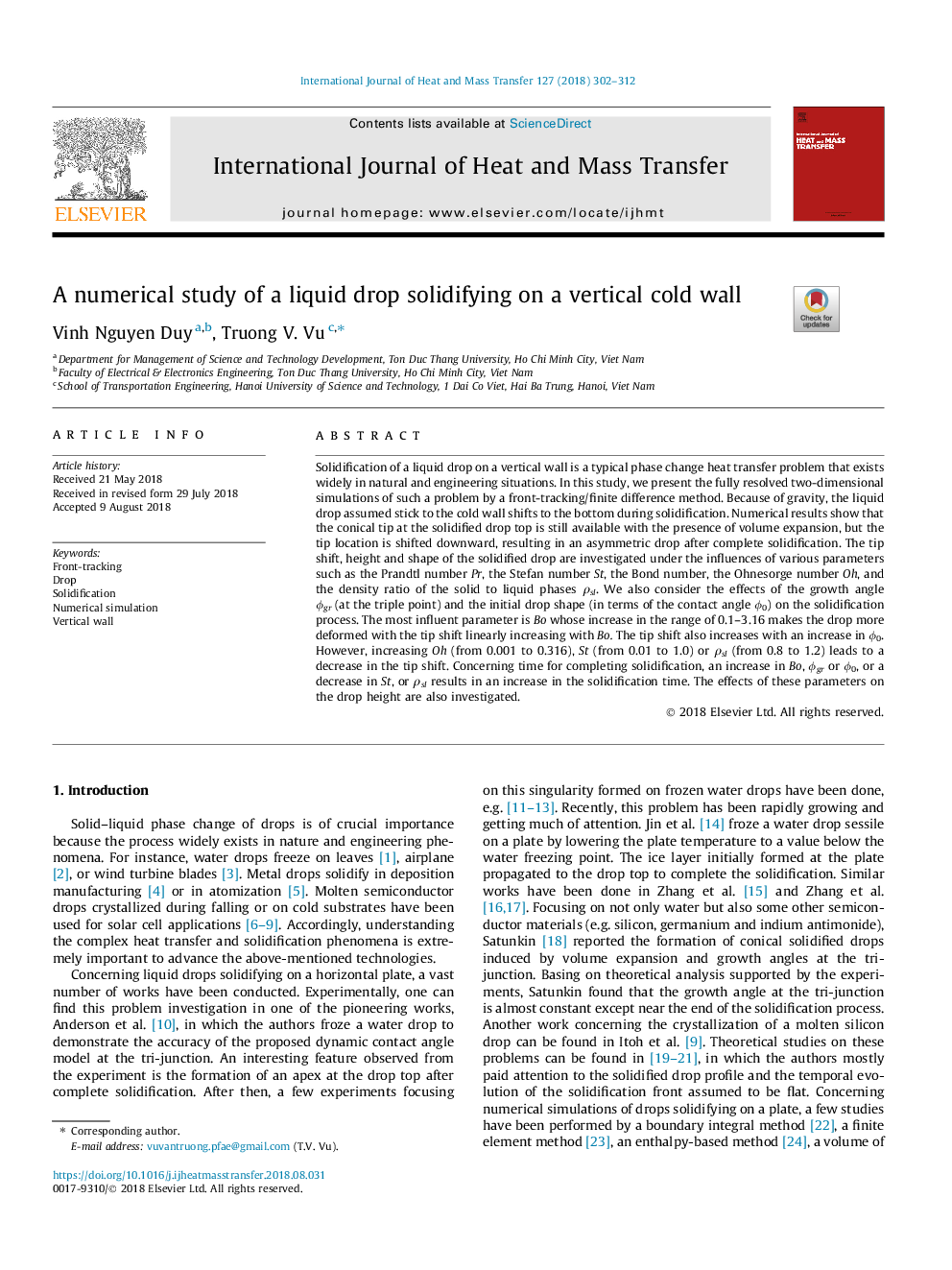| Article ID | Journal | Published Year | Pages | File Type |
|---|---|---|---|---|
| 8941977 | International Journal of Heat and Mass Transfer | 2018 | 11 Pages |
Abstract
Solidification of a liquid drop on a vertical wall is a typical phase change heat transfer problem that exists widely in natural and engineering situations. In this study, we present the fully resolved two-dimensional simulations of such a problem by a front-tracking/finite difference method. Because of gravity, the liquid drop assumed stick to the cold wall shifts to the bottom during solidification. Numerical results show that the conical tip at the solidified drop top is still available with the presence of volume expansion, but the tip location is shifted downward, resulting in an asymmetric drop after complete solidification. The tip shift, height and shape of the solidified drop are investigated under the influences of various parameters such as the Prandtl number Pr, the Stefan number St, the Bond number, the Ohnesorge number Oh, and the density ratio of the solid to liquid phases Ïsl. We also consider the effects of the growth angle Ïgr (at the triple point) and the initial drop shape (in terms of the contact angle Ï0) on the solidification process. The most influent parameter is Bo whose increase in the range of 0.1-3.16 makes the drop more deformed with the tip shift linearly increasing with Bo. The tip shift also increases with an increase in Ï0. However, increasing Oh (from 0.001 to 0.316), St (from 0.01 to 1.0) or Ïsl (from 0.8 to 1.2) leads to a decrease in the tip shift. Concerning time for completing solidification, an increase in Bo, Ïgr or Ï0, or a decrease in St, or Ïsl results in an increase in the solidification time. The effects of these parameters on the drop height are also investigated.
Related Topics
Physical Sciences and Engineering
Chemical Engineering
Fluid Flow and Transfer Processes
Authors
Vinh Nguyen Duy, Truong V. Vu,
